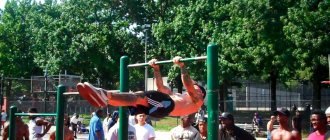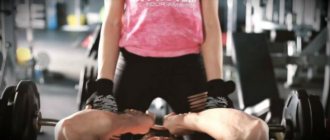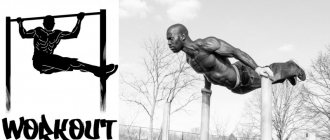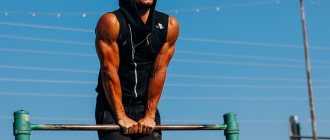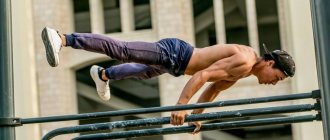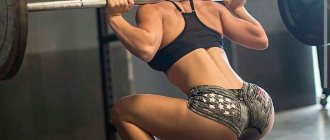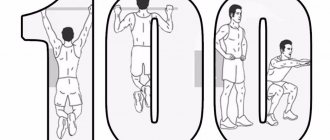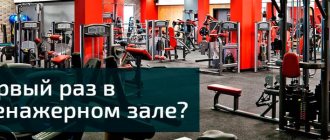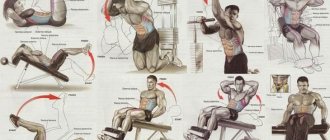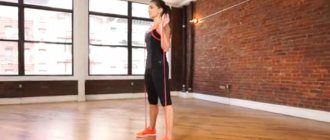- August 10, 2019
- Workouts in the gym
- Vladislav Bolshakov
Street workout is a sport that involves training on street equipment with your own weight or weights. Recently, such activities have become increasingly popular among young people. This article will cover training programs, exercises and other elements of this sport.
Description
Typically, workout athletes train on horizontal bars and parallel bars, but workout also includes exercises without additional equipment, which will be discussed below.
Horizontal bars and parallel bars were popular back in Soviet times. Although there were not many elements and tricks then, many athletes performed basic exercises on street equipment.
The founder of street workout can be considered the American Hannibal Tyrone Lanham, better known as Hannibal For King.
He posted a video on YouTube, where he performed various elements of workout, for which this video received a huge number of views. After this, many young people began to engage in street sports and achieve high results.
At the moment, street workout is not an official sport, but many competitions have been held in various countries. Today we can highlight the following workout stars: Nick Anisimov, Dmitry Kuznetsov, Daniels Laizans, Andrea Larosa and others.
Competitions[edit | edit code]
In 2013, the first street gymnastics festival was held in Serbia, competitions in the Czech Republic. In 2014, domestic competitions took place in Poland. In 2015, domestic competitions were held in Spain. Also in 2015, the World Street Workout Championship was held in Kazakhstan.
There are various criteria for evaluating a performance:
- 1st option: Strength, entertainment, clarity, number of elements in combination, charisma.
- 2nd option: Statics, dynamics and combinations.
Competitions can be held: a) in a free style - everyone shows their program, b) in the format of a one-on-one duel (“battles”) (English battle - fight, battle), during which two competitors take turns showing their program and then the judges choose the best one.
Federation[edit | edit code]
World Street Workout and Calisthenics Federation (WSWCF)
is a non-governmental and non-profit organization operating worldwide. The Federation was founded on April 8, 2011. WSWCF is located in Riga, Latvia[7]. The current president of the WSWCF is Māris Šlēziņš[8].
Goals of the WSWCF
:
- development of workout as a social movement and as a professional sport throughout the world;
- official recognition of street training as one of the sports;
- attracting new members to the workout;
- creation of new sites for workout.
- promoting workouts around the world, including disseminating information about street training at the international level, organizing international educational and qualification events, cooperation with national and international governmental and non-governmental bodies and organizations;
- creation and coordination of the activities of national and regional unions and organizations;
- Organization of international workout competitions, including regional and world championships, development and approval of rules for such competitions;
- Development and implementation of internationally recognized procedures for obtaining and maintaining the qualifications of workout instructors, including procedures for training and certification of instructors;
- through its activities, contribute to the improvement of the general health of members of society and the quality of life, in order to promote social integration between different sectors of society, and contribute to the development of a better civil society at the national and international level.
Exercises
Let's look at the basic movements that are inherent in this sport and exercises on the workout floor: pull-ups on the bar, push-ups on the uneven bars, from the floor, squats - regular and on one leg, lifting the legs or knees to the bar.
- Pull-ups on the horizontal bar.
This exercise is the most basic one with which you can develop your biceps and latissimus dorsi muscles. The best effect can be achieved when pull-ups are performed smoothly and under control without the help of the legs. There are many types of exercises, which consist in the width of the grip and its variations. So, you can do pull-ups with a wide grip, medium grip, narrow grip, reverse grip, straight grip, and so on.
- Dips.
This is also the main workout exercise that will help pump up the chest muscles, triceps and shoulders. It is also best to perform push-ups smoothly and without using your legs. There are not as many variations here as in pull-ups, but you can do push-ups with different body positions to engage certain muscle groups.
- Pushups.
This exercise is similar to the previous one and pumps up the same muscles. You can perform it with a narrow, medium or wide stance.
- Squats.
Squats are great for your legs.
You should squat to a position where your thigh is parallel to the floor. You should also not help yourself with your hands while holding on to anything.
These were the main workout exercises. It's safe to say that they will help pump up the whole body if you train regularly.
In sports you compete with others, in workout - with yourself
Sports are a zero-sum game: if one wins, the other loses. This condition underlies any sport. This is what creates the competitive component. The problem is that this leads to negative consequences. Yes, everyone strives to develop in order to defeat others, but at the same time, not a single competitive athlete will reveal to you his training secrets. He doesn’t want you to become better, stronger, or even surpass him.
Sport, even team sport, is still a story about individual victory, and workout is about collective victory.
Workout athletes have a different attitude towards victories. We believe that the only person you truly compete with is yourself. And every day you should strive to be better than you were yesterday. So I don't think about surpassing anyone. I think about becoming better myself and helping others become better too. If I find out an effective way to double my pull-ups in a month, I'll be happy to share it with everyone.
Elements on the horizontal bar
The elements on the horizontal bar are so-called tricks with which you can surprise others. Here we will consider exactly those movements that will help increase your strength indicators.
- Exit by force on one and two hands.
This element is basic. Athletes often use it for overall core muscle development.
- Horizon.
This is one of the most difficult elements in workout, which involves the muscles of the shoulders and back. The horizon really looks very impressive. You can also do horizontal push-ups to develop your skills.
- Front (horizontal) hanging.
This is also one of the most difficult workout tricks. It involves the latissimus dorsi and abs. You can perform pull-ups while hanging horizontally to increase strength and endurance.
- One arm pull-ups.
Many people mistakenly believe that if you do 10 pull-ups with two hands, then you can do exactly half as many pull-ups with one hand—5 times. This is fundamentally wrong. Such pull-ups have a different mechanics of movement, which means they involve muscles with a different load. Most athletes are able to do 20-30 pull-ups with two arms, but cannot do a single pull-up with one.
There are also elements such as an officer's exit by force, a needle, a back stop, a prince's exit and others. However, there is no point in considering them in detail, since they are not particularly popular for developing strength.
Today success in training, tomorrow in everything else
Let's imagine for a second a person who is dissatisfied with his life and, in particular, with his reflection in the mirror. Let's say his name is Vasily. He learns about workout and decides to try it. The first thing Vasily will need to do is go outside and find the nearest area with horizontal bars. That is, workout from the very beginning forces a person to leave his comfort zone and start doing something. Already at this stage, many people have difficulties, as they are embarrassed by other people, their shape and the fact that they don’t know how to do anything. But if Vasily has set a goal for himself, he will find a way out. He will look for sites farther from home, and practice early in the morning or late in the evening.
Photo: Anton Shcherbakov / WorkOut Photostock
Gradually overcoming one’s insecurities in order to achieve a goal has a positive effect on Vasily’s character and willpower. Over time, he begins to notice changes in himself: shortness of breath disappears, his stomach tightens, muscles appear. At a certain point, others begin to notice these changes. And Vasily now comes to work in high spirits. He sees that with hard work he can change something here too. Then he decides to transfer to a new place in his company, where he had long wanted to go, but he lacked self-confidence. Vasily improves his technical knowledge, enrolls in English courses and applies for a vacancy in the European branch of the company.
This example is, of course, exaggerated, but it shows well how one change leads to another. And it all starts with the first step - for example, with horizontal bars and uneven bars. And the main task of workout culture is to bring a person to them.
Equipment
What do you need to do workout exercises at home? You can, of course, create a program without any devices. However, it will be much more effective to equip your room with a horizontal bar. Every athlete should have a crossbar at home.
There are three types of home horizontal bars: wall-mounted, between walls and 3 in 1.
A wall horizontal bar is a regular crossbar mounted on two beams, which, in turn, are attached to the wall.
The second type is a crossbar, which is installed between walls, for example in a doorway.
The 3 in 1 horizontal bar is a combination of a crossbar, parallel bars and abdominal supports. The design is assembled in such a way that if you turn it over, you get another sports equipment. This thing is most preferable for training according to the workout plan, which also includes push-ups on the uneven bars.
On the street in any residential area you can find a horizontal bar or parallel bars. Outdoor areas are very convenient for doing exercises. Firstly, classes take place outdoors. Secondly, there is a lot of space for training. In addition, the outdoor playgrounds have all the necessary equipment for training: horizontal bar, parallel bars, wall bars, monkey bars, and more.
Where to begin
Equipment for workout at home:
- Horizontal bar attached to the wall;
- A bed with a headboard or a bedside table no lower than half a meter;
- Chairs.
Since classes are held at home, you need to adhere to certain rules:
- At the beginning of each workout, it is necessary to ventilate the room. In summer, it’s a good idea to practice in front of an open window or window, because... When exercising, the body absorbs a lot of oxygen, and fresh air is simply necessary.
- In between sets, do not forget about your pulse. To prevent its indicators from falling to the point of feeling like you were just sitting on the couch and not sweating 5 minutes ago, walk around the room and be in slight movement.
- You can and should train at home to any dynamic music that will set you up for positive emotions.
- To avoid minor injuries and sprains, exercise on a non-slip surface; for this, purchase special exercise mats at any sports store.
Some tips for beginners doing workout at home:
- Is it difficult to complete any element? Simplify it.
- Are your arms not bending as they should, or are your legs getting in the way when pumping up your abs? Ask a friend for help.
- Reduce your range of motion.
Program for Beginners
At the start, people want to see results as quickly as possible. However, you should understand that training will bear fruit after some time. It depends on what the training regimen will be and whether there will be enough rest from stress. This workout program for beginners is designed specifically for beginners. It is balanced in terms of load and rest.
Monday:
- Straight grip pull-ups 5-8 times (3 sets).
- Reverse grip pull-ups 5-8 times (3 sets).
- Negative pull-ups (lowering from the top position) 4-6 times (2 sets)
Tuesday: rest.
Wednesday:
- Push-ups on parallel bars 8-10 times (3 sets).
- Push-ups 12-15 times (3 sets).
- Knee push-ups 12-15 times (2 sets).
Thursday: rest.
Friday:
- Single leg squats 4-7 times (2 sets) or regular squats 10-15 times (2 sets).
- Jumping on toes 20-30 times (2 sets).
- Jumping up from the bottom position 5-10 times (2 sets).
Saturday: rest.
Sunday: rest.
Workout for beginners is structured in such a way that classes mostly take place every other day to give the body time to recover. This is the best option in the initial stages of training. In the future (after 1-2 months), you can gradually increase the load.
Advanced program
Monday:
- Strength exercises with two arms 4-8 times (2 sets).
- Pull-ups 10-15 times (3 sets).
- Reverse grip pull-ups 12-16 times (3 sets).
- Hanging on the horizontal bar for 30-60 seconds (2 sets).
Tuesday:
- Push-ups on parallel bars 20-25 times (3 sets).
- Handstand push-ups 4-8 times (2 sets).
- Push-ups 25-30 times (2 sets).
Wednesday: rest.
Thursday:
- Squats on one leg 10-12 times (3 sets).
- Squats on two legs 15-20 times (3 sets).
- Jumping from the bottom position 10-12 times (2 sets).
- Hold the bottom position of squats for 20-40 seconds (2 sets).
Friday: rest.
Saturday:
- One-arm pull-ups 3-5 times (2 sets).
- Strength exercises with two arms 4-8 times (2 sets).
- Push-ups on parallel bars 15-20 times (2 sets).
- Pull-ups 10-15 times (2 sets).
Sunday: rest.
The street workout training program for experienced athletes is designed so that there is enough rest for recovery, but the load here is much higher than in the previous program. In this way you can progress from the beginner plan to this program for advanced athletes.
Sources[edit | edit code]
- “Why is street workout so popular in East Europe? - Quora. https://www.quora.com/Calisthenics/Calisthenics-Why-is-street-workout-so-popular-in-East-Europe
- "On Street Workout" https://pccblog.dragondoor.com/on-street-workout/
- "CALISTHENICS - Street Workout Academy." https://streetworkoutacademy.com/calisthenics/#
- https://www.street-workouts.com/tag/isometric-exercises/
- https://en.cnki.com.cn/Article_en/CJFDTOTAL-GZTX200306018.htm
- https://www.street-workouts.com/street-workout-programs/
- https://wswcf.org/en/wswcf/about
- https://wswcf.org/en/wswcf/main-office
Circuit training
What is circuit training? This is a set of different exercises that is performed without rest and with several rounds. Basically, this type of training includes movements that involve different muscle groups in order to expend as much energy as possible. You can come up with a lot of different programs, since there are quite a lot of exercises in workout. Let's give an example of one of them.
- Exits with force 4-8 times.
- Push-ups from the floor 15-20 times.
- Jumping from the bottom point 8-10 times.
- Push-ups on parallel bars 10-15 times.
- Pull-ups on the horizontal bar 8-10 times.
It is necessary to perform all the exercises one after another without rest, and then rest for 2 minutes and begin to perform the complex again. This is a basic circuit workout that is aimed at developing endurance and burning subcutaneous fat. All exercises can be changed and the number of repetitions adjusted depending on your capabilities.
Consecutive exercises to forcefully exit [edit | edit code]
Main article:
Exit by force (lifting by force)
The push-up exercise is a transitional link between standard and advanced workout exercises on the horizontal bar. The muscle-up challenge challenges us to take our game to the next level because it trains the entire upper body like no other exercise. And it's also a lot of fun!
To the untrained eye, the power-up may seem like a simple combination of deadlift and press, but rest assured, it is a unique fruit in itself. This is the only upper body exercise that combines deadlifting and pressing. In addition, the push-up also requires an explosive application of force, and it is also famous for its difficult element - the moment of transition from deadlift to press past the bar. In the theory of calisthenics, going out with force at point-blank range is the pinnacle!
Pull-ups with extended range of motion[edit | edit code]
Once you can perform a few clean pull-ups so that your chin is above the bar, the next step to muscle-up is to increase your range of motion. At the top of the exercise, pull the bar down as hard as possible, using the strength of your entire body.
At first, try to pull the bar towards your chest. Once you are able to do this, begin to pull down to the level of your abdomen. Finally, you will be able to pull yourself up fast enough and with enough force that your elbows are higher than your wrists.
Negative exit by force at point-blank range[edit | edit code]
Performing the negative (or eccentric) phase of the exercise is very useful for mastering many exercises in street sports, although it can be especially useful for training push-ups. Negative phase training helps you feel the movement from top to bottom.
Step over the bar until you're in a bar press position, then gently lower yourself into the bottom of the press. In this position, continue to lower yourself as slowly as possible, while extending your legs forward, tensing all the muscles in your body and gripping the bar as tightly as possible as your arms rotate around the bar from the press position to the pull-up position. At first you will descend very quickly, but over time you will learn to control the descent phase. Finally, control over your movements on the bar is transformed into the opposite movement - a forceful exit into point-blank range.
Deep grip[edit | edit code]
One of the challenges of performing a power-up is that you need to get the timing right when your arms should roll from the pull-up grip to the press position. Sometimes working with a “deep grip” can improve the situation.
Before you begin the pull-up, the deep grip allows you to hang on your wrists so they don't have to rotate around the bar as you transition. If you start the exercise with a grip such that your palms are already ready to press, you will automatically be in the right position to enter the press phase as soon as you move to the top phase of the pull-up. A deep grip can be especially helpful when performing a clean muscle-up.
Some people find it ideal to practice an exaggerated deep grip with clenched fists on the bar. In this variation, the bar will cut into the crook of your wrists, allowing your hands to sit even higher on the bar. This will give you more leverage, especially if you have wrist mobility issues that prevent you from performing a standard deep-grip muscle-up.
Point-blank force exit[edit | edit code]
The Great and Powerful Push-Up starts the same way as a pull-up, but the moment your body passes the bar up, they go their separate ways. Grab the bar with a grip slightly narrower than for a regular pull-up, then lean your body back and pull the bar down, below your body, as far as possible. At the top of the pull-up, lift your chest over the bar and straighten your arms.
Although the first phase of the push-up has many similarities to the pull-up, both exercises are slightly different. When you perform a power-up, you move your elbows back, not out to the sides as in a standard pull-up. This is why a close grip works better for power-ups.
It may also be helpful to lean your body back from the bar during the pull-up phase before entering the top phase of the exercise.
This movement occurs in an S-shape, rather than a straight path, which allows you to get your body behind the bar.
In the initial phase of a workout exercise, we recommend that you use inertia and use explosive techniques. It may take a lot of effort to master the necessary coordination, although if you are confident in performing pull-ups and have faithfully completed the previous stages, sooner or later you will overcome the pull-up from point-blank range.
Chicken wing pose[edit | edit code]
Often, people who have only recently begun to learn how to perform push-ups find that when performing the exercise, one hand goes over the bar before the other. While the chicken wing pose can help you feel that important transition from pull-up to press, it's best to break the habit as soon as possible, as it can put unnecessary strain on your shoulders and elbows.
If at first you go into the “chicken wing” position, there is nothing wrong with that, but complete your mission and learn to go over the bar with both hands at once.
Clean exit by force at point-blank range[edit | edit code]
Once you have learned how to perform several push-ups in a row, it is time to start training without using inertia and without swinging, performing the exercise only through solid technique and pure strength.
In a clean push-up, you keep your legs straight and do not swing your body or hips, but pull yourself up to the bar and push up with your whole body, bringing your body completely over the bar, in a dead hang position. You will have to tighten your abdominal muscles and legs to perform a clean power-up. You will also likely find it helpful to extend your legs forward as you transition from the pull-up phase to the press phase.
Exit by force at point-blank range with a reverse grip[edit | edit code]
Unlike pull-ups, which are usually more difficult to perform with an overhand grip, muscle-ups are much more difficult to perform with a reverse grip. Changing hand positions makes the transition from deadlift to bench press even more difficult. As a result, you have to exert even more explosive force during the pull-up phase to get your arms to swing around the bar. It is also important not to put too much stress on your thumbs during the transition. The power-up exercise with a mixed grip (when one hand is in the forward grip position and the other in the reverse grip position) can serve as a good introductory workout exercise on the horizontal bar for mastering the power-up exercise with a reverse grip.
Plyometric matrix. Crazy variations of point-blank force entry[edit | edit code]
Performing plyometric power-ups at close range is the ultimate manifestation of explosive strength in workouts. To perform this exercise, you must lift yourself as high as possible. In other words, keep training explosive pull-ups and explosive presses.
Once you can get high enough on the bar, try removing your hands at the top of the push-up for at least a second. This is where the plyometric push-pull begins. Over time, you will be able to lift your hands off the bar for longer periods of time, add clap, move your hands behind your back, or even cross them over your chest.
The most advanced variation of a point-blank power-up involves jumping over the bar or turning 360 degrees around its axis. This is possible, if only you can believe in yourself. Truly, this exercise reflects the whole essence of street sports in all its splendor!
Muscle gain
Since the previous workout was aimed at losing weight, now let’s look at the weight training program.
Many people want to look massive in terms of muscles, but there are doubts that it is possible to gain muscle mass on the horizontal bar. Some believe that workout is useless in this matter, while others, on the contrary, argue that training on horizontal bars is a great way to build muscle. And both of these opinions can be considered correct.
If we consider beginners in sports, then workout for beginners will definitely suit them. Beginners will be able to quickly get in shape: increase strength and gain muscle mass, but only up to a certain point. Then you will have to put in much more effort to move. In addition, progress will be much slower. Here is the answer to the question, is it possible to pump up muscles on horizontal bars? Yes, it is possible, but not significantly. “Little” here refers to muscle mass that will not look like that of professional bodybuilders. The muscles will look quite natural and harmonious.
But how can you progress in gaining muscle mass on the horizontal bars? There is no difference, for example, in pull-ups and bent-over dumbbell rows. In both cases, the main load falls on the latissimus dorsi muscles. However, in the gym it is possible to increase the weight of dumbbells over time, thereby progressing. On the horizontal bar, you have to pull yourself up only with your own weight, so the muscles experience the same load. The only option to increase the load would be pull-ups with additional weight. By performing weighted pull-ups, you can gradually put more weight on your belt, thereby loading the muscles more. This will stimulate growth. The same rule applies to dips.
Workout training programs for gaining muscle mass are designed in such a way that the repetition range ranges from 8 to 12 times. This means that the additional weight needs to be chosen so that you barely have enough strength to do 12 repetitions. If the muscles do not get tired to this amount, then the weight should be increased. Rest between sets can be from one and a half to two minutes.
You need to know that you should not exercise with additional weight before the age of 14, since the body is not sufficiently strong. You also need to check your maximum result in pull-ups with your own body weight. If it is more than 12 repetitions, then you can gradually add dumbbells, kettlebells or water bottles.
Workout. Training principles
Before starting the practical part, we must understand the principles of workout training. Without understanding the principles of street training, the effectiveness of the best training schemes is reduced to zero.
Street Workout consists of the following training principles:
The principle of gradualism
7 out of 10 athletes quit workouts in the first year of training. The vast majority of them give up training in the first 3-4 weeks. The problem is overtraining, which beginners get by training too hard. The desire to achieve everything at once leads to the fact that the body does not have time to cope with new stress. The level of cortisol (stress hormone) increases, not only the body begins to hurt, but also the psyche, which suffers due to the high level of stress hormones. No amount of willpower helps. An enthusiastic athlete who started workout training incorrectly will increase his cortisol to the highest possible values and quit training.
We start with a simple, light load that does not lead to excessive discomfort. The initial load may be less than what you can do in your first workout.
Example: This is what your first workout might look like:
| Exercise | Approaches | Repetitions | Rest between sets in minutes | Rest between exercises in minutes |
| Pull-ups | 5 | 10 | 1,5 | 4 |
| Dips | 5 | 12 | 1,5 | 4 |
| Squats | 5 | 40 | 1 | — |
After this workout, your muscles will hurt for a week. The muscles and nervous system will experience excessive discomfort. It will be ingrained in the subconscious that workout training is very difficult and painful.
So we start with the following diagram:
| Exercise | Approaches | Repetitions | Rest between sets in minutes | Rest between exercises in minutes |
| Pull-ups | 3 | 5 | 1,5 | 4 |
| Dips | 3 | 5 | 1,5 | 4 |
| Squats | 3 | 15 | 1 | — |
After this workout, your muscles will hurt for 1-2 days. On the third day you can return to training.
Smoothly, without excessive discomfort, begin your workout workout. Only such a start will ensure results in the medium and long term.
The principle of load progression
The key principle that must be followed to achieve results in the shortest possible time is the principle of load progression.
Training is a stress factor that is necessary for muscle growth and improvement of any performance. The body, finding itself in a hole after a workout, is restored to pre-workout levels, after which it creates a reserve in case of a recurrence of similar stress.
Increasing reserves allows you to increase the load in the next workout. Then we recover, create a new reserve for a new level of stress and increase the load again. And so on ad infinitum.
The principle of load progression is an integral part of any strength training!
This small paragraph is much more important than any particulars of a workout workout.
The principle of progression of loads in workout may look like this:
Crossfit. Program for beginners. Workout #1
| Exercise | Approaches | Repetitions | Rest between sets in minutes | Rest between exercises in minutes |
| Pull-ups | 3 | 5 | 1,5 | 4 |
| Dips | 3 | 5 | 1,5 | 4 |
| Squats | 3 | 15 | 1 | — |
Crossfit. Program for beginners. Workout #2
| Exercise | Approaches | Repetitions | Rest between sets in minutes | Rest between exercises in minutes |
| Pull-ups | 3 | 7 | 1,5 | 4 |
| Dips | 3 | 7 | 1,5 | 4 |
| Squats | 3 | 18 | 1 | — |
Crossfit. Program for beginners. Workout #3
| Exercise | Approaches | Repetitions | Rest between sets in minutes | Rest between exercises in minutes |
| Pull-ups | 3 | 8 | 1,5 | 4 |
| Dips | 3 | 8 | 1,5 | 4 |
| Squats | 3 | 21 | 1 | — |
Crossfit. Program for beginners. Workout #4
| Exercise | Approaches | Repetitions | Rest between sets in minutes | Rest between exercises in minutes |
| Pull-ups | 3 | 10 | 1,5 | 4 |
| Dips | 3 | 10 | 1,5 | 4 |
| Squats | 3 | 24 | 1 | — |
Crossfit. Program for beginners. Workout #5
| Exercise | Approaches | Repetitions | Rest between sets in minutes | Rest between exercises in minutes |
| Pull-ups | 4 | 10 | 1,5 | 4 |
| Dips | 4 | 10 | 1,5 | 4 |
| Squats | 4 | 25 | 1 | — |
Crossfit. Program for beginners. Workout #6
| Exercise | Approaches | Repetitions | Rest between sets in minutes | Rest between exercises in minutes |
| Pull-ups | 5 | 10 | 1,5 | 4 |
| Dips | 5 | 10 | 1,5 | 4 |
| Squats | 5 | 25 | 1 | — |
Crossfit. Program for beginners. Workout #7
| Exercise | Approaches | Repetitions | Rest between sets in minutes | Rest between exercises in minutes |
| Pull-ups | 5 | 11 | 1,5 | 4 |
| Dips | 5 | 11 | 1,5 | 4 |
| Squats | 5 | 28 | 1 | — |
Crossfit. Program for beginners. Workout #8
| Exercise | Approaches | Repetitions | Rest between sets in minutes | Rest between exercises in minutes |
| Pull-ups | 5 | 12 | 1,5 | 4 |
| Dips | 5 | 12 | 1,5 | 4 |
| Squats | 5 | 30 | 1 | — |
Crossfit. Program for beginners. Workout #9
| Exercise | Approaches | Repetitions | Rest between sets in minutes | Rest between exercises in minutes |
| Pull-ups | 6 | 12 | 1,5 | 4 |
| Dips | 6 | 12 | 1,5 | 4 |
| Squats | 6 | 32 | 1 | — |
Crossfit. Program for beginners. Workout #10
| Exercise | Approaches | Repetitions | Rest between sets in minutes | Rest between exercises in minutes |
| Pull-ups | 6 | 13 | 1,5 | 4 |
| Dips | 6 | 13 | 1,5 | 4 |
| Squats | 6 | 35 | 1 | — |
Over 10 workouts, we increased the number of approaches by 2 times, repetitions by more than 2 times. The physical capabilities of the body have increased significantly, muscle mass has increased.
For comparison, let’s show the unsystematic training of an average beginner:
Crossfit. Program for beginners. Workouts No. 1-3
| Exercise | Approaches | Repetitions | Rest between sets in minutes | Rest between exercises in minutes |
| Pull-ups | 3 | 5 | 1,5 | 4 |
| Dips | 3 | 5 | 1,5 | 4 |
| Squats | 3 | 15 | 1 | — |
Crossfit. Program for beginners. Workouts No. 5-8
| Exercise | Approaches | Repetitions | Rest between sets in minutes | Rest between exercises in minutes |
| Pull-ups | 3 | 6 | 1,5 | 4 |
| Push ups | 3 | 9 | 1,5 | 4 |
| Squats | 3 | 16 | 1 | — |
Crossfit. Program for beginners. Workouts No. 20-22
| Exercise | Approaches | Repetitions | Rest between sets in minutes | Rest between exercises in minutes |
| Pull-ups | 3 | 8 | 1,5 | 4 |
| Dips | 3 | 8 | 1,5 | 4 |
| Squats | 3 | 20 | 1 | — |
Progress is minimal or non-existent. The principle of load progression is neglected. There is no result.
It is not necessary to increase the load every workout. The frequency of load increase depends on:
- Experience. The longer an athlete trains, the greater the load, the less frequently the load needs to be increased.
- Work of the hormonal and nervous systems. Lack of hormones or central nervous system capacity leads to the body's inability to create reserves.
- Age. The younger you are, the easier it is to progress.
- Quality of restoration. Nutrition, sleep and the use of recovery mechanisms relate to this point.
- Training program.
Supercompensation principle
Compliance with the principle of load progression becomes more difficult without understanding the principle of supercompensation.
The training cycle is divided into the following phases:
- Traumatization. Training. Muscles are stressed and microtraumas appear. The hormonal system and central nervous system are subject to stress. During training, muscles and strength indicators do not grow! There is no point in exercising every day.
- Recovery. Starts after completion of training. The body gradually returns to its pre-workout state. The muscles, central nervous system and hormonal system are restored to pre-workout levels (!). During the recovery phase, training is not only pointless, but also detrimental to the athlete's progress.
- Supercompensation. The stage where the necessary reserve is created. Training is effective only in the supercompensation phase! The muscles were restored and increased beyond the pre-workout level. Only here will we be comfortable going beyond the limits of the previous training.
- Loss of super compensation. Occurs if the athlete missed the supercompensation phase. The body returns to pre-workout levels. The problem is typical for athletes who train too infrequently.
More information about what training looks like in different phases of the training process can be found here.
The pleasure principle
The principle of any workout workout is that working on your body should be fun. If there is no pleasure, the athlete is making a mistake in some way.
The following rules will help you follow the principle of pleasure in the training process:
- Pleasure may not appear from the first workouts. More often - after 1-2 months of regular training. It's difficult to immediately enjoy workouts that leave your body in extreme discomfort. If you are far from sports, then in the first few weeks there will be more discomfort than pleasure. The pleasure-discomfort ratio will change. Over time, the pleasure will become so overwhelming that the discomfort will no longer be noticed.
- Don't overload yourself in training, don't work to failure in every approach. Acceptable is 3-5 failures during the entire training session. Failure training wears out the nervous and hormonal systems. Effective only for athletes who use anabolic steroids.
- Follow the principle of supercompensation. The pleasure of workout cannot be achieved through training in the recovery phase, which wears out the body and psyche.
- After training, the athlete should be tired, but not on the verge of death. If after a good workout you cannot recover within 60 minutes, the load is too great, it causes more discomfort than pleasure.
- Do not train when physically or mentally worn out. Example: you are simultaneously faced with many problems in your family and at work. If these problems are not too significant psychologically, training can relieve the psyche. If too much energy is spent on solving problems, and the thought of training makes you feel nauseous, physical activity will only make matters worse.
- Love the process. We strive for results, for a “tick”, but without love for the training process, without sympathy for what you do, it will not be possible to get this “tick”.
Athlete nutrition
In fact, no workout training program will work properly if the diet is not adjusted. This is the basis of all progress in sports.
If we consider losing weight in a workout, then circuit training should be done about 3 times a week. Nutrition should be structured so that the daily caloric intake is less than the energy expended during the day. In other words, there must be a calorie deficit. In this case, the missing energy will be drawn from fat deposits.
Gaining muscle mass is the reverse process. It is necessary to eat more food so that the daily caloric intake goes beyond the energy expended. In other words, you need a calorie surplus. This is the most important condition when gaining muscle. The body must have energy not only for its own needs, but also for the construction of new muscle fibers. This is why excess calories in the diet are important. But training also plays an important role here. So, without regular exercise, all excess energy will go into fat. The body needs to create conditions under which muscle growth will begin, which is achieved through training with additional weight. Only in this case will the excess calories be directed to the structure of muscle fibers.
How to create your lesson plan
Many people are not interested in ready-made workout training programs. Of course, it is best to follow your own program, which is tailored to the individual characteristics of the body.
Where should I start? You should start by setting goals and objectives. They can be the following: losing weight, gaining muscle mass, increasing endurance, increasing strength. It’s probably no secret that programs will differ depending on your goals.
Comparison with other fitness areas
Despite the fact that workout training is considered a separate sport that in no way intersects with either classical bodybuilding or modern CrossFit, it has much in common with these disciplines.
| Periodization | Harmony of development | Development of functional indicators | Difficulty getting into sports | Injury hazard | The need to adhere to a nutrition plan, workout and daily plan | |
| Workout | Absent. The time between workouts is determined based on your own well-being. | Provides an ideal ratio of muscle mass to total mass. There is a lag in some muscle groups. | Lack of specialization. The priority is the development of explosive strength and strength endurance. | Low. Training is available to everyone. | Low. | To get better results, you need to stick to it. |
| Bodybuilding/powerlifting | Rigid periodization to achieve better results. | Harmonious development without lag. The percentage of body fat is adjusted depending on the stage of preparation. | Specialization depending on the direction. The priority is to develop strength endurance and absolute strength. | Low. Training is best done under the supervision of a trainer. | Relatively low. | |
| Crossfit | Formed by the coach or absent. It largely depends on the athlete’s well-being. | Ideal harmonious development without lag of some muscle groups. The percentage of fat is kept to a minimum. | Lack of specialization. The priority is to develop functional strength. | Low. Training is best done under the supervision of a trainer. | High. |
Let's consider the first case - losing weight
As already mentioned, it is best to use circuit training to expend as much energy as possible. To create your circle lesson plan, you need to follow the rules:
- The number of exercises following each other must be at least three.
- It is necessary to include those movements that involve different muscle groups.
- Rest between sets should not be more than two minutes. The optimal option is 1-1.5 minutes.
- The number of workouts per week should be adjusted to suit you. You need to give yourself enough time to recover. Beginners can train every other day, while experienced athletes can train more often or more intensely.
Proper nutrition during street workout training
It is obvious that without supplying the body with all the necessary substances there will be no recovery and progress. It is important for any athlete to supply the body with enough protein (from 1.5 grams per 1 kg of body weight) so that muscles can recover, and carbohydrates (from 5 grams per 1 kg of body weight) so that you have enough energy for productive training. Fats are used by the body primarily to regulate metabolic processes and maintain the health of all systems; 0.5-1 grams per 1 kg of body weight will be enough.
We recommend using the following products in your standard diet:
- Proteins: chicken, turkey, fish, meat, seafood, eggs, dairy products,
- Carbohydrates: any cereals, potatoes, vegetables, durum wheat pasta, fruits, bread,
- Fats: nuts, fish oil, flaxseed oil.
You should take a good vitamin and mineral complex on an ongoing basis. This is important for normalizing hormonal levels, improving all metabolic processes in the body and protecting against overtraining.
Muscle gain
Weight training is already more individual. Here are the rules to follow when creating a muscle-building workout program:
- The weight of the weight is selected in such a way that the muscles are under load for about 30-40 seconds, after which failure occurs. This is approximately 8-12 repetitions.
- The rest time can range from 1.5 to 2.5 minutes.
- It is better to train one muscle group in one workout.
- Only basic exercises for a specific muscle should be included in the plan. For example, for the back - pull-ups, for the chest - push-ups on parallel bars and from the floor.
- The frequency of training depends on the body's ability to recover. If you feel tired the next day, then you don’t need to do the workout. If the training is aimed at a specific muscle, then you can train different muscle groups every day, but you need to be very attentive to your well-being.
Pros and cons of workout
Workout has several obvious advantages:
- Availability. The necessary tools for workout classes, namely horizontal bars and parallel bars, are available in many courtyards and outdoor sports fields. And your own body is always with you.
- Complex development of the body. Workout simultaneously develops entire muscle groups of the back, arms, and core.
- Safety. Workout, or rather its classic form, which does not involve competition, but is focused on improving physical fitness, is the least traumatic sport.
- Low cost. There is no need to pay for training in open areas. And the only equipment you will need is the simplest sneakers and comfortable clothes.
Workout also has a couple of disadvantages.
Firstly, it is impossible to vary the weight. If in the fitness room you can take a lighter barbell, then at the workout area you have to work with your body weight. Therefore, workout for beginners does not imply rapid progress at the start.
Secondly, in bad weather and in winter, training on horizontal bars can be uncomfortable. However, this does not stop those who are seriously interested in workout - you can always train in any weather.
